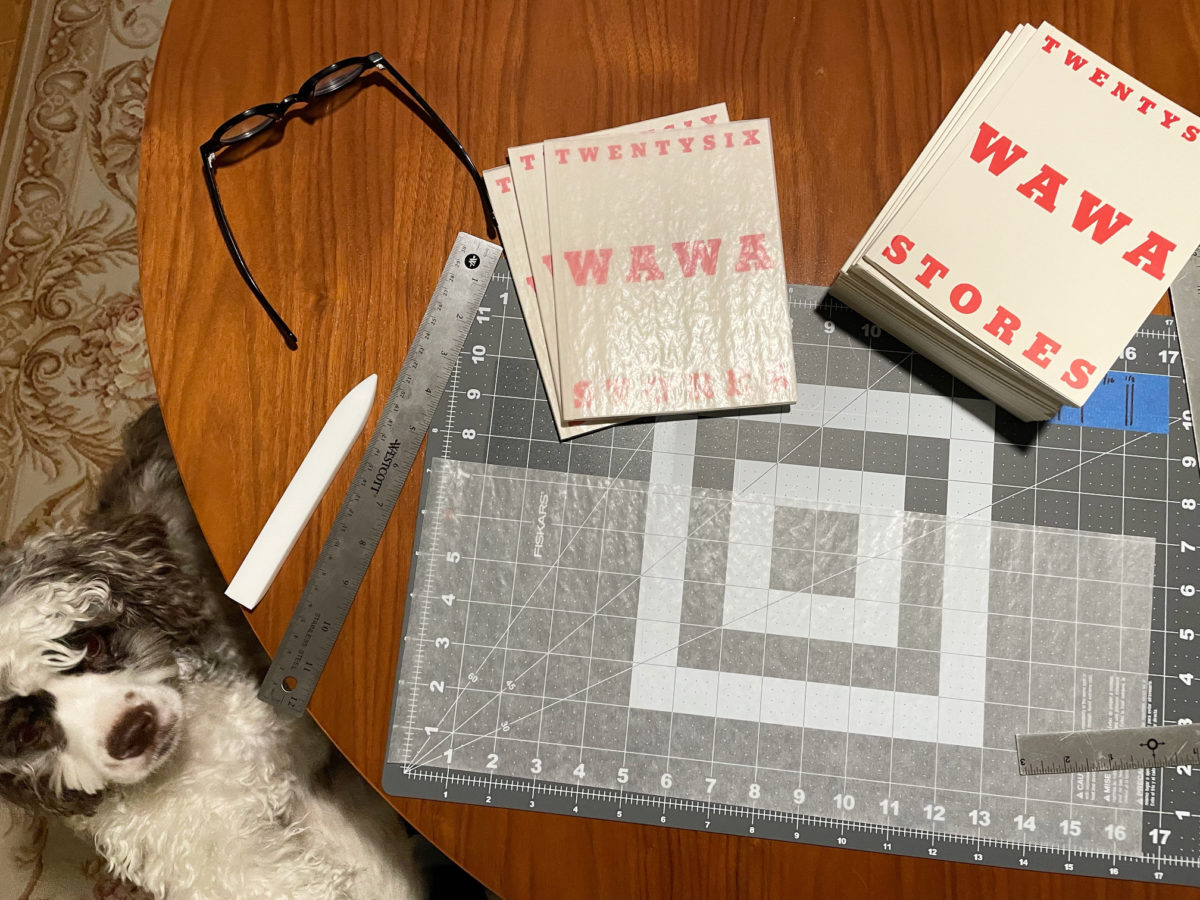Eric Weeks and Paul Rider: Faculty Life Grant Recipient presentations
Wednesday, February 23rd, 2022
Professors Eric Weeks and Paul Rider will present their latest photographic work supported by the faculty grant program Friday, March 4, 1:10-2 pm in the Learning Commons (Room 214).

Prof. Eric Weeks’ “Twentysix Wawa Stores,” in process (with a photobomb by Weegee).
ERIC WEEKS
In reference to Edward Ruscha’s quietly contemplative Twentysix Gasoline Stations, published in 1962, Twentysix Wawa Stores is a film, print, and artist‘s book project documenting the convenience store and gas purveyor Wawa.
Throughout the film, Wawa store locations along the Lincoln Highway are unobtrusively observed, starting in Lancaster and culminating at the farthest north site in Elizabeth, New Jersey. This transcontinental road, established in 1913 as the automobile became the dominant means of transportation, remains a primary regional and interstate artery.
Weeks’ practice considers the profound technological and cultural shifts in the Northeast of the United States. Twentysix Wawa Stores asks the viewer to consider a crossroads: the use of internal combustion engines in transportation vehicles is ending, and convenience stores based on fossil fuel sales will need to adapt.
The film was shot during the Covid-19 pandemic, documenting a particular time when masks were necessary to enter stores, and oftentimes two trips were required to retrieve the forgotten mask left in the car.

Image by Prof. Paul Rider using the albumen photographic printing process.
PAUL RIDER
The albumen photographic printing process is one that was widely used during the 19th century and was one that photographers could purchase pre-packaged, which basically became the standard printing process of the time period. Eventually, this was replaced by the more well-known gelatin silver printing that is more commonly used today. This left the albumen process to those who are fascinated with the older processes and creating the prints from the basic formulas that were left behind.
Rider has been doing research on this process for years, gathering books and formulas to produce the prints. “One such book was written in such flowery and convoluted verse that it made the process seem far more complicated than it already is,” Rider says, and “this created a bit of hesitation on my part to explore further. Recently though, I stumbled upon one version of this process, that makes my initial hesitation into diving into the process more intriguing.”
Albumen works with a solution of egg whites, and a few other chemicals, to coat the paper initially. This is the organic material that needs to bind with the silver nitrate to give the rich values that make up the photographic image. However, this is just the beginning of the process. Paper types, and the craft in which the paper is coated with both the egg white solution and the silver nitrate, can be the true challenge to having success with the process.
“The imagery created with the albumen process is an exploration of Self,” Rider says. “It is about the concept of transformation through the use of time and multiple imagery.”
